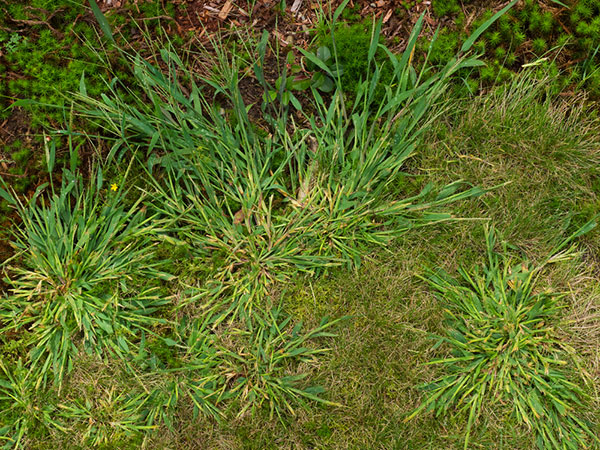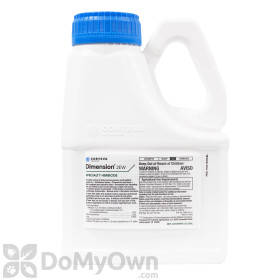
What is a Weed?

You may be familiar with typical lawn weeds like crabgrass or dandelions.
But, did you know that the term "weed" refers to any plant that is growing where it is not wanted? A plant could be desirable when its growing in one area, but considered a weed when it's growing in another area.
A common example of this is with different types of turf grass. While Bermudagrass may be a desired grass for many lawns in the south, if you have Bermudagrass growing in your Fescue lawn, you may consider it a weed.
What are the different types of weeds?
Weeds can be classified in two different ways - by their form and structure and by the life cycle. When looking at the form and structure, or morphology, weeds are broken into three main categories: grassy weeds, broadleaf weeds, and sedges. When characterizing weeds by how they grow and reproduce, or their life cycle, you may hear the terms annual, biennial, and perennial weeds.
By understanding these classifications, you'll be better prepared to identity the weeds growing in your lawn and to prepare a game plan to control them.
Identifying Weeds by Their Features: Broadleaf, Grassy, and Sedges

The features, form, and structure of a weed can help to identify it. Here's how to identify grassy weeds, broadleaf weeds, and sedges.
- Grassy weeds are the most common type of weed and they usually resemble grasses. The blades of grassy weeds are usually narrow, and they grow in a clumping pattern. Some common examples of grassy weeds include crabgrass, goosegrass, dallisgrass, quackgrass, and Bermuda grass.
- Broadleaf weeds are easier to spot because they do not look like grasses. Instead, they have wider leaves, and the leaves have netlike veins. They often have colorful flowers. Chickweed and clover are two examples of broadleaf weeds.
- Sedges are a type of weed that is often mistaken for grasses. They have narrow, triangular-shaped stems and they usually grow in wet areas. Some common sedges include yellow and purple nutsedge.
Identifying Weeds by Their Lifecycle: Annual, Biennial, Perennial
Another way to classify weeds is by their lifecycle. By understanding how and when weeds grow, you can better identify and control them.
Annual weeds only live for one year and they often grow quickly. This type of weed reproduces by seed and are often the easiest to control. Annual weeds include both summer annuals (or warm-season annual weeds) and winter annuals (or cool-season annual weeds).
- Summer annuals typically germinate in the spring, produce, and release their seeds in the late summer and fall, then die. Some common examples of summer annual weeds include crabgrass and sandbur.
- Winter annuals, on the other hand, germinate in the fall and then flower and produce seed in the spring before they die in late spring or summer. Some common examples of winter annual weeds include henbit and chickweed.
Biennial weeds live for two years and they often have a taproot (a large, thick root). These weeds typically germinate in the spring, grow during the summer of the first year. During their second year, they flower and produce seed, and then die in the fall. Some common biennial weeds include bull thistle, wild carrot and Mullein.
Perennial weeds are the most difficult to control because they can live for several years. These weeds typically have a deep root system, and they often grow back after being removed. Some common perennial weeds include dandelions, thistles, and plantain.
Perennial weeds can be further classified as "woody" or "herbaceous".
- Woody perennials, such as blackberry and honeysuckle, have woody stems that remain alive during the winter.
- Herbaceous perennials, on the other hand, can be either simple or creeping. Simple herbaceous perennials, such as dandelions, have above-ground stems that grow from a taproot. These weeds spread by seeds. Creeping, or rhizomatous, herbaceous perennials, such as quackgrass or nutsedge, have above-ground stems that grow from horizontal, underground stems (or rhizomes). Creeping perennials can reproduce from seed, rhizomes, stolons, and tubers.
Controlling Weeds in Your Lawn
Now that you know the different types of weeds, you can take steps to identify and remove them from your lawn. Here are some helpful resources:
- Check out Weed Control Guides to learn how to identify, get rid of and prevent specific weeds in your lawn.
- Our Post-Emergent Herbicide buyer's guide can help you understand more about the different types of weed killer products.
- The DoMyOwn Turf Box can help you prevent weeds with products tailored specifically to your lawn.
- And we offer a wide selection of both Post Emergent Herbicides (Weed Killers) and Pre Emergent Herbicides (Weed Preventers) products to help you get the job done right.
- For weed control in a range and pasture or for edible gardening, different products will be required for a proper treatment. Check out these products for weed control in a range and pasture or for your edible garden plants!

















